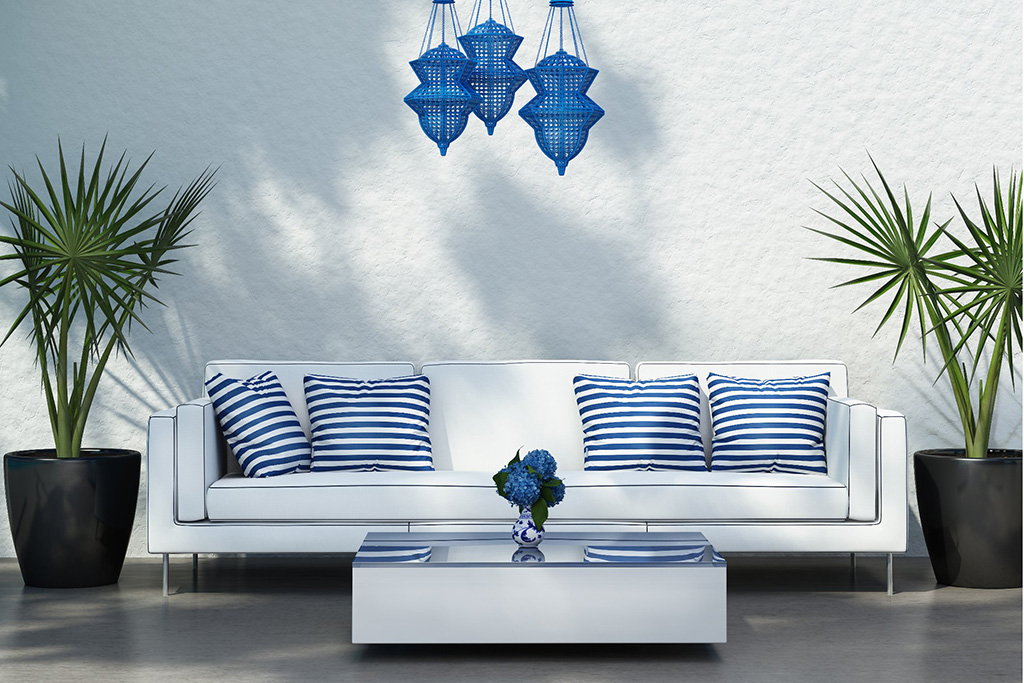Tips for creative plastering work
When designing the interior of their homes, many housebuilders and renovators take a hands-on approach and are happy to wield a brush and trowel themselves. Our expert explains how plasters can be used to create a beautiful ambience and gives advice on which product to choose.
Tip 1: Create your own room style
With plasters, you can not only give facades a face, but also effectively design the walls inside your home. Whether smooth or textured, white or colored, matte or glossy, whether living or dining room, bedroom, children’s room or bathroom – every room offers countless possibilities for creatively styling walls and ceilings with plasters. You can even go all the way and use the refined Venetian plaster technique with its marble effects. Let your imagination run wild – there are virtually no limits. However, when designing a room, less is sometimes more. For example, not every room should be plastered in a different color – the effect may be too gaudy. It is also advisable to choose a uniform surface finish. This not only connects the rooms, but also makes it easier to do the work yourself.
Tip 2: Test your own skills with a dispersion plaster
Plastering work can definitely be done by an experienced do-it-yourselfer. For this purpose, it is recommended to use a dispersion plaster. Its high flexibility prevents cracking or spalling – even when room temperatures and humidity levels fluctuate significantly. Alternatively, a special dispersion plaster can be used that contains mineral ingredients. There are, for instance, products that have been mixed with silicates and silicones, some of which are open to diffusion. This means they can absorb and release moisture from ambient air. If you’re not sure whether your plastering skills are sufficient, get yourself a bucket, a trowel and a float, go down to the cellar and mix the plaster there. You can also use a paste-like product that is immediately ready for use. Choose a cellar wall where you can try out your skills and test the desired application technique and surface finish. Afterwards, you can still decide whether it might be better to hire a professional for plastering your living space.
Tip 3: EMICODE®-certified dispersion plasters ensure healthy indoor air
Due to their ingredients and the associated emission properties, dispersion plasters did not have the best reputation for a long time. But this has changed, as there are now also some health-compatible products in this sector. Important: When choosing a plaster, consumers should watch out for the EMICODE® label, even if a craftsman makes the choice for them. Just a quick glance is enough: Low-emission and health-compatible interior plasters are now easily recognized by the EMICODE® seal on the packaging. Only dispersion plasters that meet the stringent emission limits for volatile organic compounds (VOCs) are awarded the eco-label. The EMICODE® thus meets the growing public demand for a healthy living environment.

Photo: © mihalis77/123rf.com/GEV
Do You Have Questions?
If you have any questions on certain topics or want to contact us for another reason, please contact us by phone or email.
Phone: +49 (0)211 843 449 – 01
info@emicode.com
Share article on Social Media:
